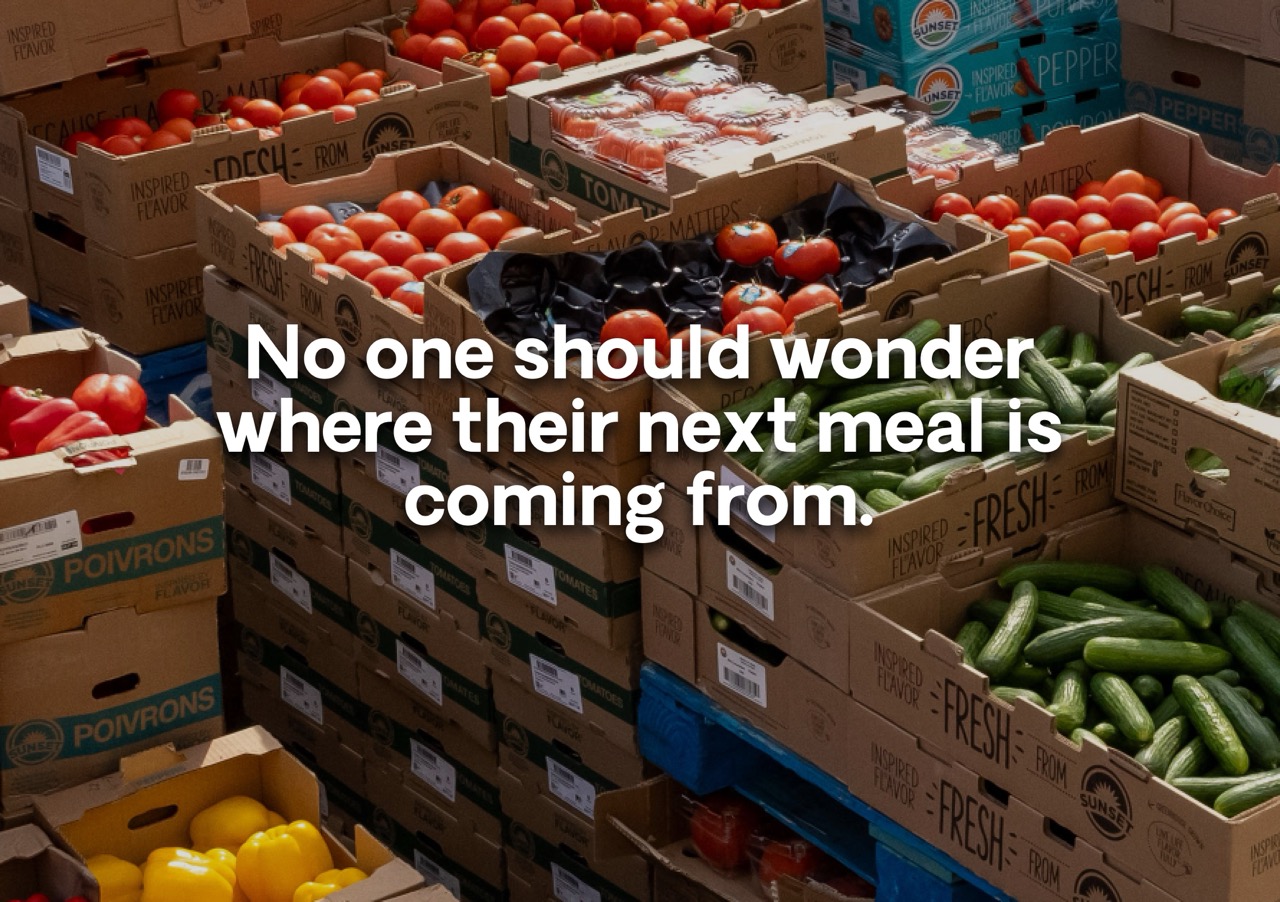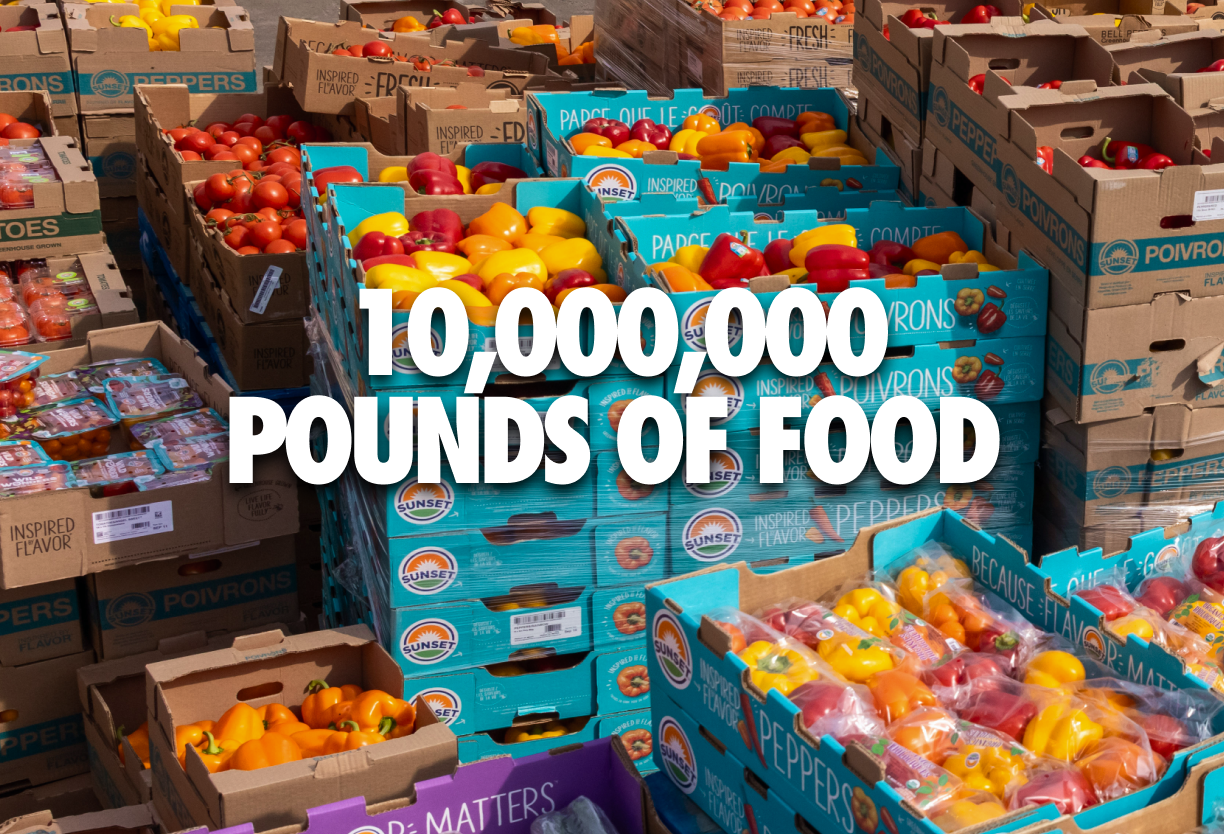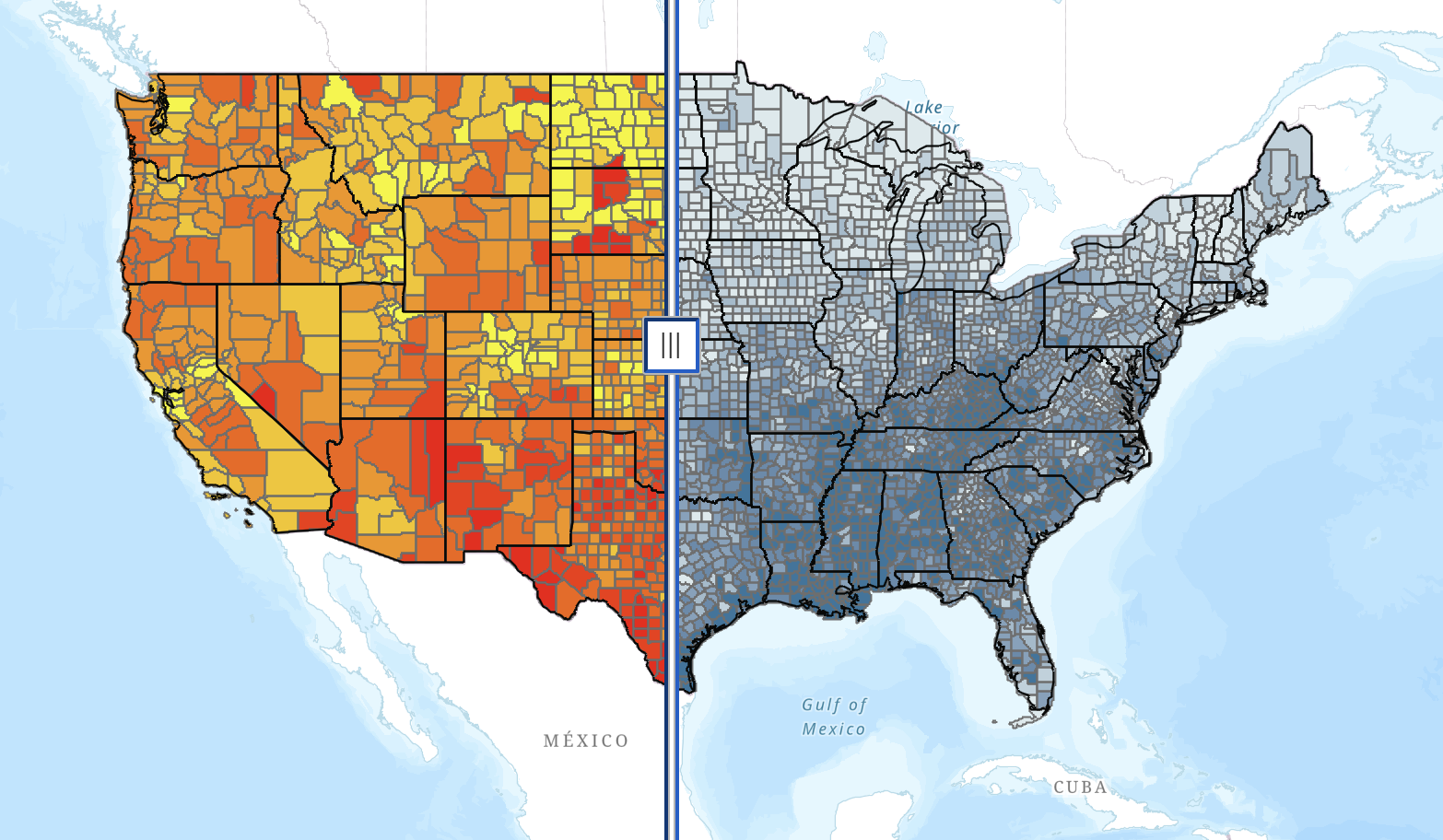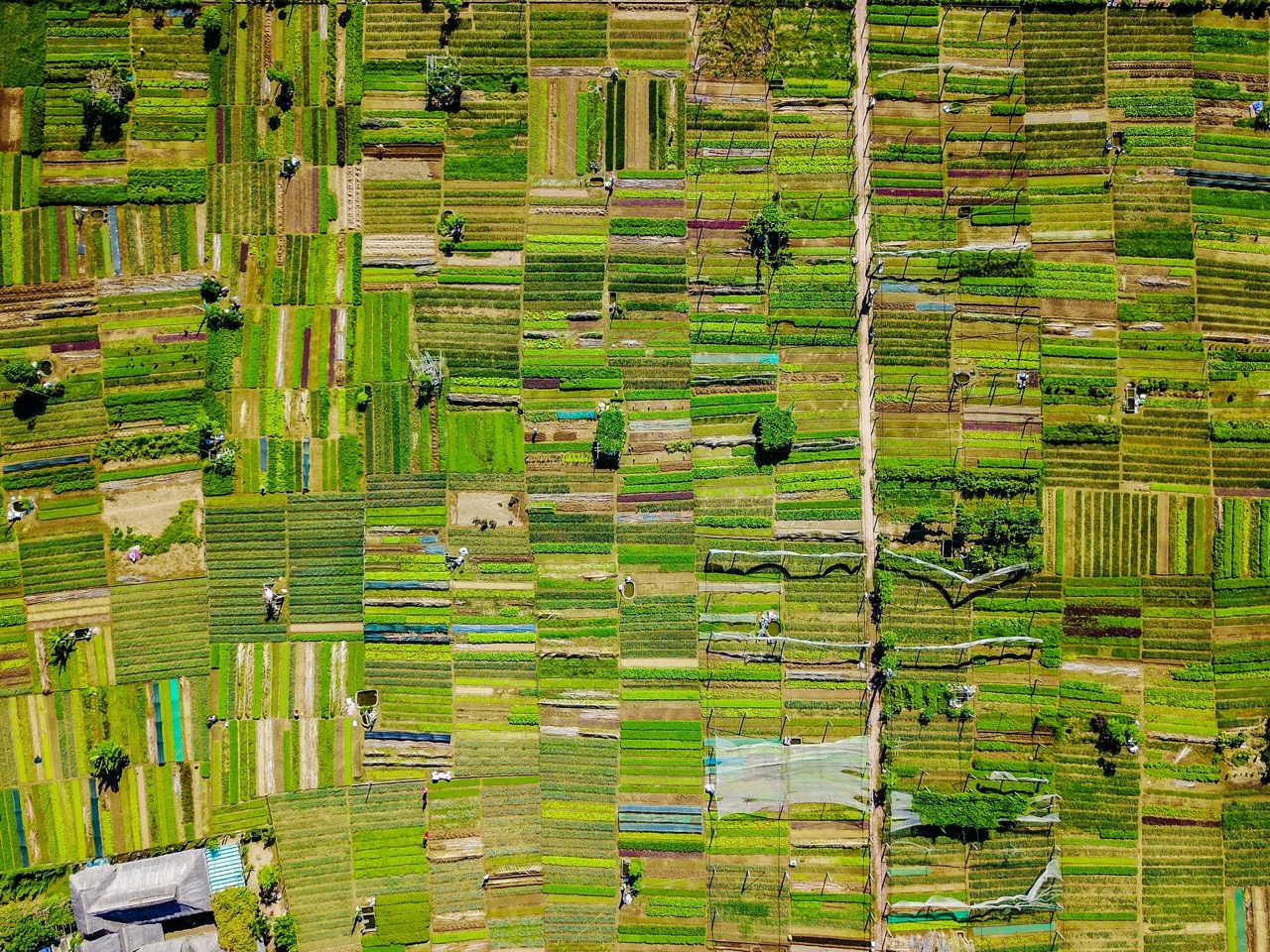Karen Belknap, the founder and CEO of Inspired Vision Compassion Center, told members of The Farmlink Project team that she “thought that if I gave children God and education, it would lift this community out of poverty, but I was wrong.” She was an active member of her community’s church and, as a teacher, greatly contributed to the lives of young people in her community in that capacity, but was moved to start Inspired Vision after a particularly troubling experience. She relayed the story of one of her first weeks as a teacher, in which one of her 12-year-old students fainted in the middle of class. She said, “it turned out that she hadn’t eaten in six days. That’s when I knew I had to start a food bank, so that’s how this all began.”
Inspired Vision is located in the most food insecure neighborhood of Dallas, where over 80 percent of residents don’t know where their next meal is coming from. What began in a church parking lot in 2014 has since expanded to a Walmart-size distribution center serving 1,900 families a day. In 2019, Inspired Vision Compassion Center provided groceries to over 243,000 families. Inspired Vision goes far beyond groceries, too—the center also distributes free hygiene products, professional clothing, school supplies, and more.
On Friday, September 18th, The Farmlink Project facilitated a delivery of 33,000 pounds of mangoes to Inspired Vision from Full Harvest, a produce resale platform. The Farmlink Project has partnered with Inspired Vision several times in the past, including 229,000 pounds of potatoes throughout July and August.
As a result of the financial loss that Inspired Vision has suffered with the expiration of a vital grant, Inspired Vision Compassion Center recently lost 30 volunteers. The organization relies heavily on these volunteers to distribute food and other essential goods. If you live in the Dallas area, The Farmlink Project urges you to consider donating your time to help feed your community!
< Back
Karen Belknap, the founder and CEO of Inspired Vision Compassion Center, told members of The Farmlink Project team that she “thought that if I gave children God and education, it would lift this community out of poverty, but I was wrong.” She was an active member of her community’s church and, as a teacher, greatly contributed to the lives of young people in her community in that capacity, but was moved to start Inspired Vision after a particularly troubling experience. She relayed the story of one of her first weeks as a teacher, in which one of her 12-year-old students fainted in the middle of class. She said, “it turned out that she hadn’t eaten in six days. That’s when I knew I had to start a food bank, so that’s how this all began.”
Inspired Vision is located in the most food insecure neighborhood of Dallas, where over 80 percent of residents don’t know where their next meal is coming from. What began in a church parking lot in 2014 has since expanded to a Walmart-size distribution center serving 1,900 families a day. In 2019, Inspired Vision Compassion Center provided groceries to over 243,000 families. Inspired Vision goes far beyond groceries, too—the center also distributes free hygiene products, professional clothing, school supplies, and more.
On Friday, September 18th, The Farmlink Project facilitated a delivery of 33,000 pounds of mangoes to Inspired Vision from Full Harvest, a produce resale platform. The Farmlink Project has partnered with Inspired Vision several times in the past, including 229,000 pounds of potatoes throughout July and August.
As a result of the financial loss that Inspired Vision has suffered with the expiration of a vital grant, Inspired Vision Compassion Center recently lost 30 volunteers. The organization relies heavily on these volunteers to distribute food and other essential goods. If you live in the Dallas area, The Farmlink Project urges you to consider donating your time to help feed your community!
Inspired Vision Compassion Center
Dallas, Texas
Karen Belknap, the founder and CEO of Inspired Vision Compassion Center, told members of The Farmlink Project team that she “thought that if I gave children God and education, it would lift this community out of poverty, but I was wrong.” She was an active member of her community’s church and, as a teacher, greatly contributed to the lives of young people in her community in that capacity, but was moved to start Inspired Vision after a particularly troubling experience. She relayed the story of one of her first weeks as a teacher, in which one of her 12-year-old students fainted in the middle of class. She said, “it turned out that she hadn’t eaten in six days. That’s when I knew I had to start a food bank, so that’s how this all began.”
Inspired Vision is located in the most food insecure neighborhood of Dallas, where over 80 percent of residents don’t know where their next meal is coming from. What began in a church parking lot in 2014 has since expanded to a Walmart-size distribution center serving 1,900 families a day. In 2019, Inspired Vision Compassion Center provided groceries to over 243,000 families. Inspired Vision goes far beyond groceries, too—the center also distributes free hygiene products, professional clothing, school supplies, and more.
On Friday, September 18th, The Farmlink Project facilitated a delivery of 33,000 pounds of mangoes to Inspired Vision from Full Harvest, a produce resale platform. The Farmlink Project has partnered with Inspired Vision several times in the past, including 229,000 pounds of potatoes throughout July and August.
As a result of the financial loss that Inspired Vision has suffered with the expiration of a vital grant, Inspired Vision Compassion Center recently lost 30 volunteers. The organization relies heavily on these volunteers to distribute food and other essential goods. If you live in the Dallas area, The Farmlink Project urges you to consider donating your time to help feed your community!
.png)








.svg)
.svg)
.svg)